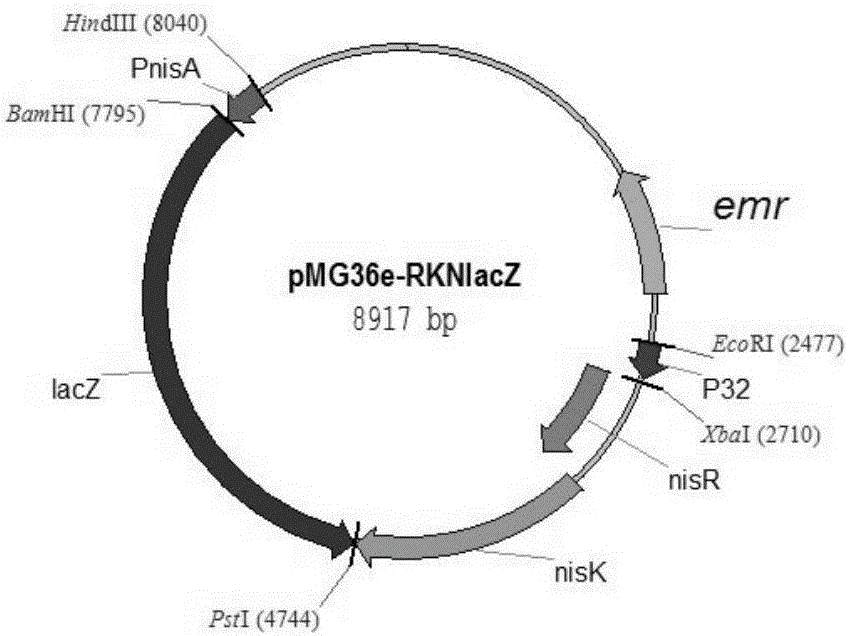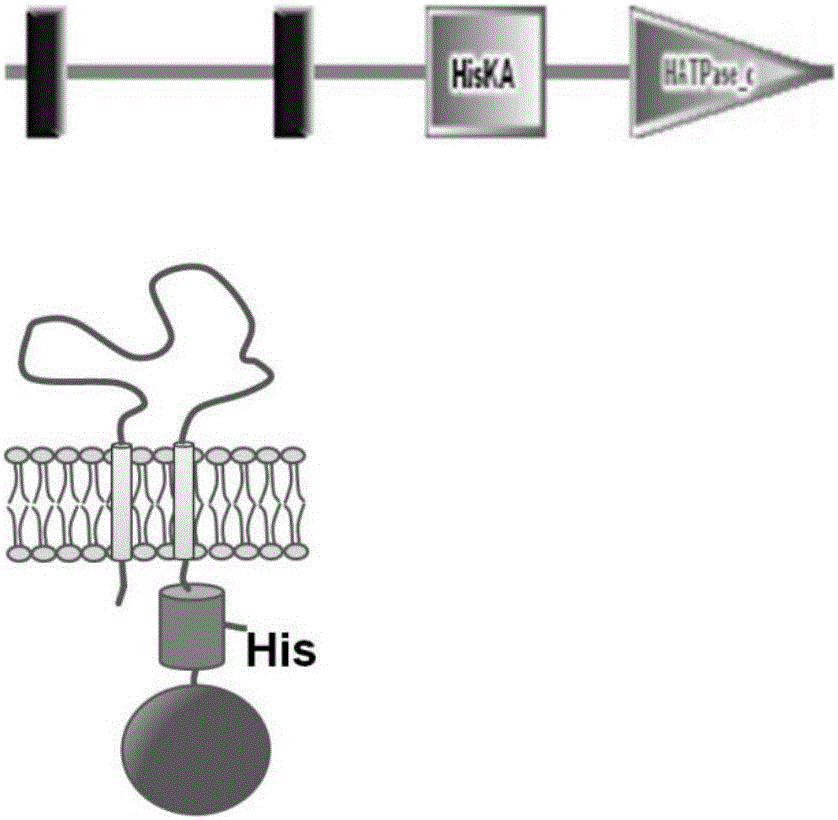Method for improving nisin induction efficiency in lactic acid bacteria NICE expression system
An expression system, lactic acid bacteria technology, applied in the field of improving nisin induction efficiency in lactic acid bacteria NICE expression system, can solve the problems of harming host bacteria, host cell damage, increasing production costs, etc.
- Summary
- Abstract
- Description
- Claims
- Application Information
AI Technical Summary
Problems solved by technology
Method used
Image
Examples
Embodiment 1
[0053] Embodiment 1, the acquisition of NisK mutant
[0054] NisK is the receptor protein of nisin, which contains two transmembrane domains and is a membrane protein ( figure 2 ), and its extracellular region is the key region for sensing signals. The coding gene sequence of NisK protein is sequence 1, and the amino acid sequence of NisK protein is sequence 2. NisK is mutated to replace a single amino acid in the extracellular region of NisK with alanine. According to the specific mutation position, the following three types are respectively obtained. mutant:
[0055] 1. NisK mutant E46A: NisK mutant E46A is a protein obtained by mutating the 46th glutamic acid shown in sequence 2 to alanine; the coding gene sequence of NisK mutant E46A is sequence 3.
[0056] 2. NisK mutant E108A: NisK mutant E108A is a protein obtained by mutating the 108th glutamic acid shown in sequence 2 to alanine; the coding gene sequence of NisK mutant E108A is sequence 4.
[0057] 3. NisK mutant ...
Embodiment 2
[0058] Embodiment 2, the application of NisK mutant in improving the nisin induction efficiency in the lactic acid bacteria NICE expression system
[0059] 1. Acquisition of plasmids
[0060] 1. Acquisition of plasmid pMG36e-RKNlacZ
[0061] The plasmid pMG36e-RKNlacZ was constructed using the pMG36e vector (containing the P32 promoter). Plasmid pMG36e-RKNlacZ is a vector obtained by inserting the DNA fragment shown in sequence 6 between the restriction sites XbaI and HindIII of the pMG36e vector, and keeping other sequences of the pMG36e vector unchanged. Wherein, the 8th-695th nucleotide in the DNA fragment shown in sequence 6 is the coding gene of nisR, the 687th-2030th nucleotide is the coding gene of NisK, and the 5094-5330th is the nisA promoter (starting Sub P nisA ), the 2037-5093 nucleotide is the reporter gene lacZ. In the plasmid pMG36e-RKNlacZ, the P32 promoter was used to control the constitutive expression of nisRK, and the nisA promoter P nisA Controls indu...
PUM
 Login to View More
Login to View More Abstract
Description
Claims
Application Information
 Login to View More
Login to View More - R&D
- Intellectual Property
- Life Sciences
- Materials
- Tech Scout
- Unparalleled Data Quality
- Higher Quality Content
- 60% Fewer Hallucinations
Browse by: Latest US Patents, China's latest patents, Technical Efficacy Thesaurus, Application Domain, Technology Topic, Popular Technical Reports.
© 2025 PatSnap. All rights reserved.Legal|Privacy policy|Modern Slavery Act Transparency Statement|Sitemap|About US| Contact US: help@patsnap.com



